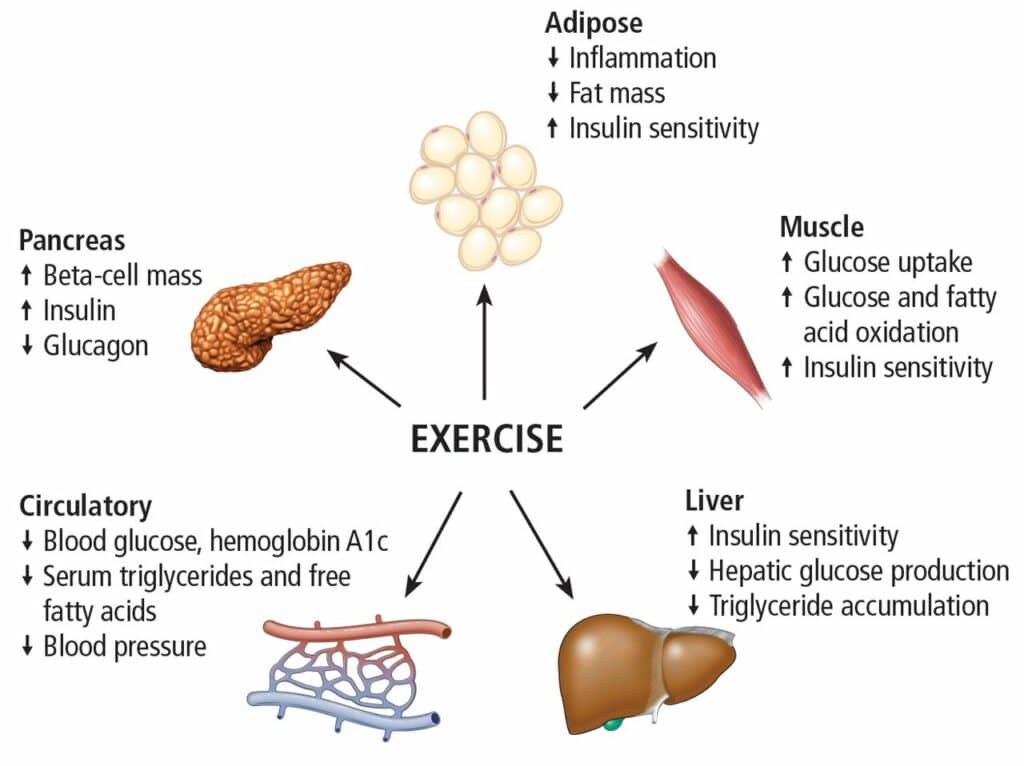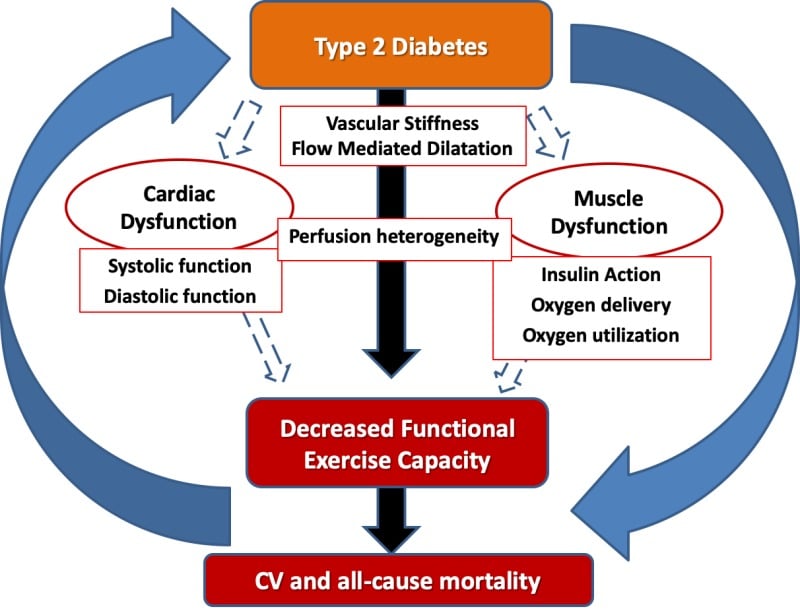Type 2 diabetes mellitus (T2DM) is a chronic metabolic disorder that affects millions of individuals worldwide. It is characterised by insulin resistance and impaired glucose metabolism, leading to elevated blood sugar levels. Alongside medical interventions and lifestyle modifications, regular exercise has emerged as a crucial component in the management of T2DM. In this blog, we will explore the significance of exercise for individuals with T2DM and pre-diabetes, while referencing key research articles to provide evidence-based insights.
Exercise Prescription for Patients with Type 2 Diabetes and Pre-diabetes; A Position Statement from Exercise and Sport Science Australia:
Exercise and Sport Science Australia (ESSA) has recognized the positive impact of exercise on managing T2DM and pre-diabetes. The position statement emphasises the importance of tailoring exercise programs to your individual needs, considering factors such as age, overall health, and physical fitness. ESSA recommends a combination of aerobic exercise, resistance training, and flexibility exercises to achieve optimal health outcomes for people with T2DM.
Exercise and Type 2 Diabetes; The American College of Sports Medicine and the American Diabetes Association:
The joint position statement by the American College of Sports Medicine (ACSM) and the American Diabetes Association (ADA) highlights the benefits of regular exercise for individuals with T2DM. These benefits include improved glycemic control, increased insulin sensitivity, and decreased risk of cardiovascular complications. The statement suggests that individuals with T2DM engage in at least 150 minutes of moderate-intensity aerobic exercise spread across most days of the week, along with resistance training exercises twice a week.

Exercise Training Modalities in Patients with Type 2 Diabetes Mellitus: A Systematic Review and Network Meta-analysis:
This systematic review and network meta-analysis examined various exercise training modalities and their impact on T2DM. The study found that both aerobic exercise and resistance training are effective in improving glycemic control and reducing insulin resistance. Additionally, a combination of aerobic and resistance training demonstrated the greatest improvements in glycemic control. The study also highlighted the potential benefits of high-intensity interval training (HIIT) for individuals with T2DM, indicating that it may be a time-efficient alternative to traditional continuous aerobic exercise.

Exercise and Insulin Resistance in Type 2 Diabetes Mellitus: A Systematic Review and Meta-analysis:
Insulin resistance plays a significant role in the development and progression of T2DM. This systematic review and meta-analysis investigated the effects of exercise on insulin resistance in individuals with T2DM. The results indicated that both aerobic exercise and resistance training led to improvements in insulin sensitivity. Moreover, combining these two forms of exercise had an additive effect, resulting in greater improvements in insulin resistance. The study also highlighted the importance of regular exercise in reducing abdominal adiposity, a key contributor to insulin resistance.
Exercise is an essential component in the management of T2DM. Multiple research articles, including those referenced in this blog, have provided compelling evidence for the benefits of exercise in improving glycemic control, insulin sensitivity, and overall health outcomes for individuals with T2DM. The exercise prescription guidelines suggested by ESSA, ACSM, and ADA offer valuable recommendations for individuals with T2DM, emphasising a combination of aerobic exercise, resistance training, and flexibility exercises.
Remember, before starting any exercise program, it is important to consult with a healthcare professional, who can provide personalised recommendations based on your specific health condition. By incorporating regular exercise into your routine and following the guidance of healthcare professionals, you can take proactive steps towards effectively managing T2DM and improving your overall well-being.
Unsure where to start? Book an initial consultation with one of our amazing Exercise Physiologists now!
https://the-movement-mill.au4.cliniko.com/bookings
Or contact us:
https://themovementmill.com.au/contact-us/
Colberg, S. R., Sigal, R. J., Fernhall, B., Regensteiner, J. G., Blissmer, B. J., Rubin, R. R., … & Braun, B. (2010). Exercise and type 2 diabetes: the American College of Sports Medicine and the American Diabetes Association: joint position statement. Diabetes care, 33(12), e147-e167.
Hordern, M. D., Dunstan, D. W., Prins, J. B., Baker, M. K., Singh, M. A. F., & Coombes, J. S. (2012). Exercise prescription for patients with type 2 diabetes and pre-diabetes: a position statement from Exercise and Sport Science Australia. Journal of Science and Medicine in Sport, 15(1), 25-31.
Kumar, A. S., Maiya, A. G., Shastry, B. A., Vaishali, K., Ravishankar, N., Hazari, A., … & Jadhav, R. (2019). Exercise and insulin resistance in type 2 diabetes mellitus: A systematic review and meta-analysis. Annals of physical and rehabilitation medicine, 62(2), 98-103.
Pan, B., Ge, L., Xun, Y. Q., Chen, Y. J., Gao, C. Y., Han, X., … & Tian, J. H. (2018). Exercise training modalities in patients with type 2 diabetes mellitus: a systematic review and network meta-analysis. International Journal of Behavioral Nutrition and Physical Activity, 15(1), 1-14.


